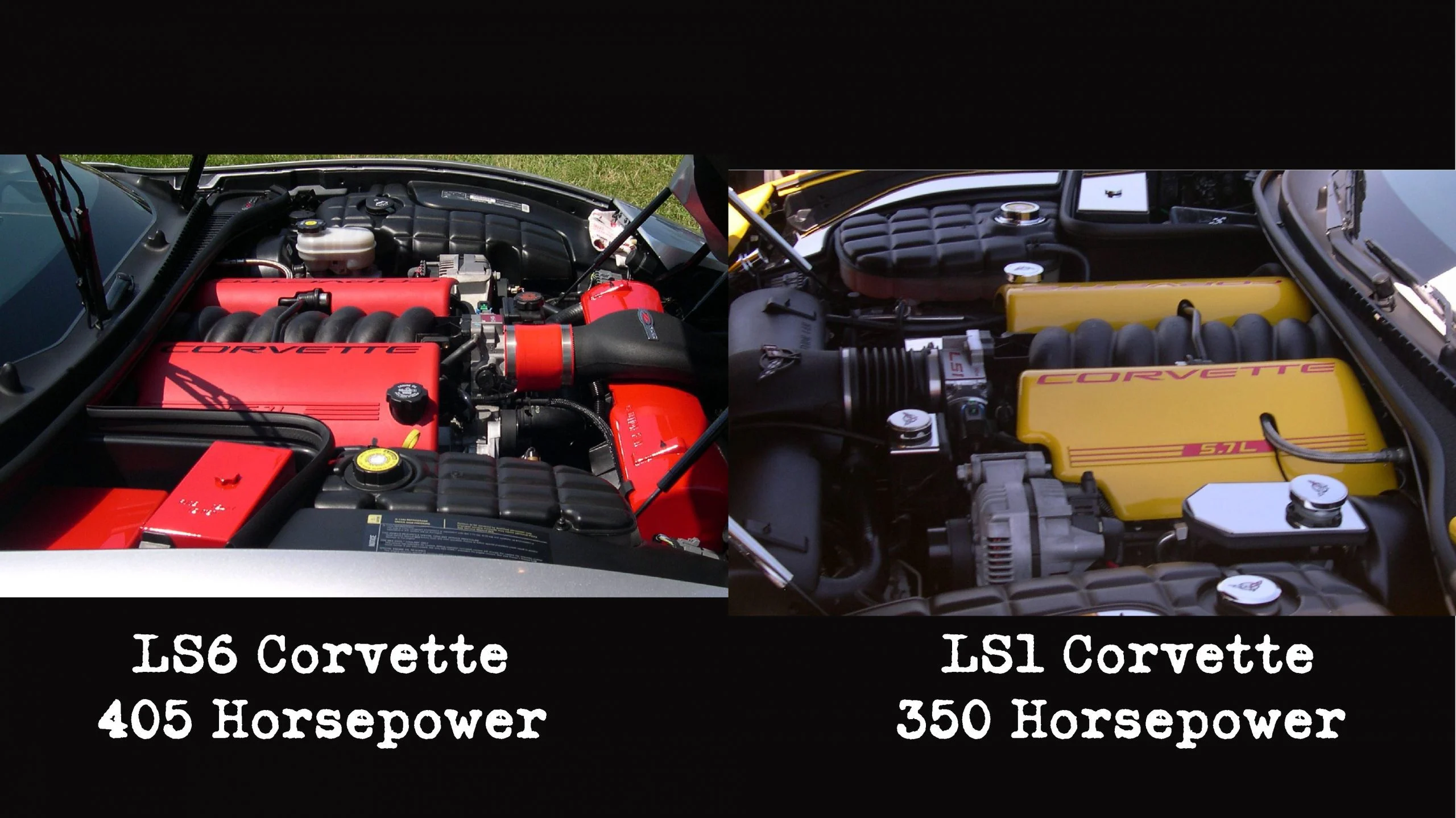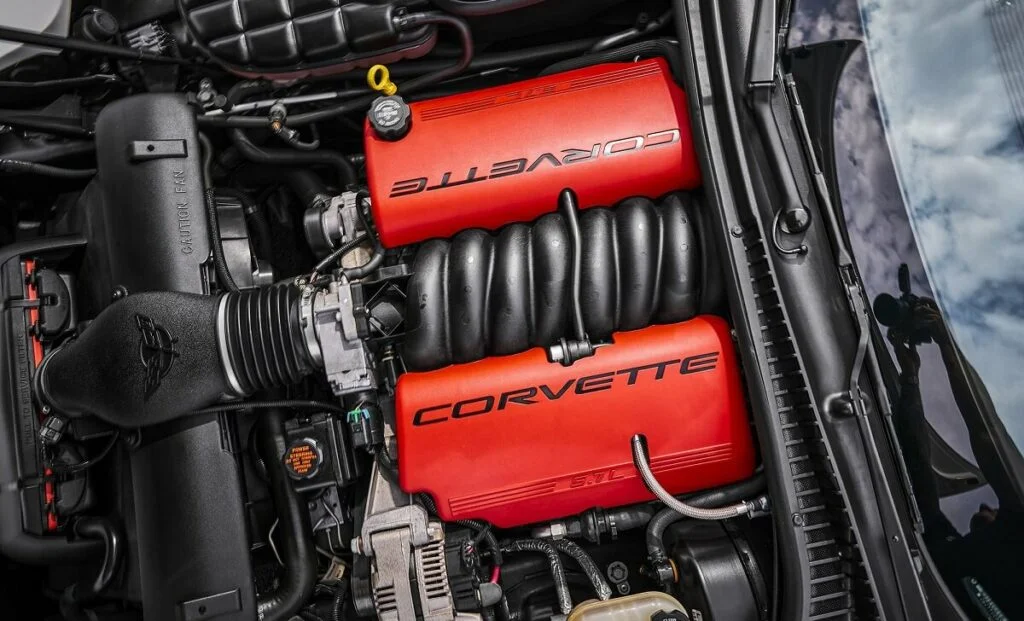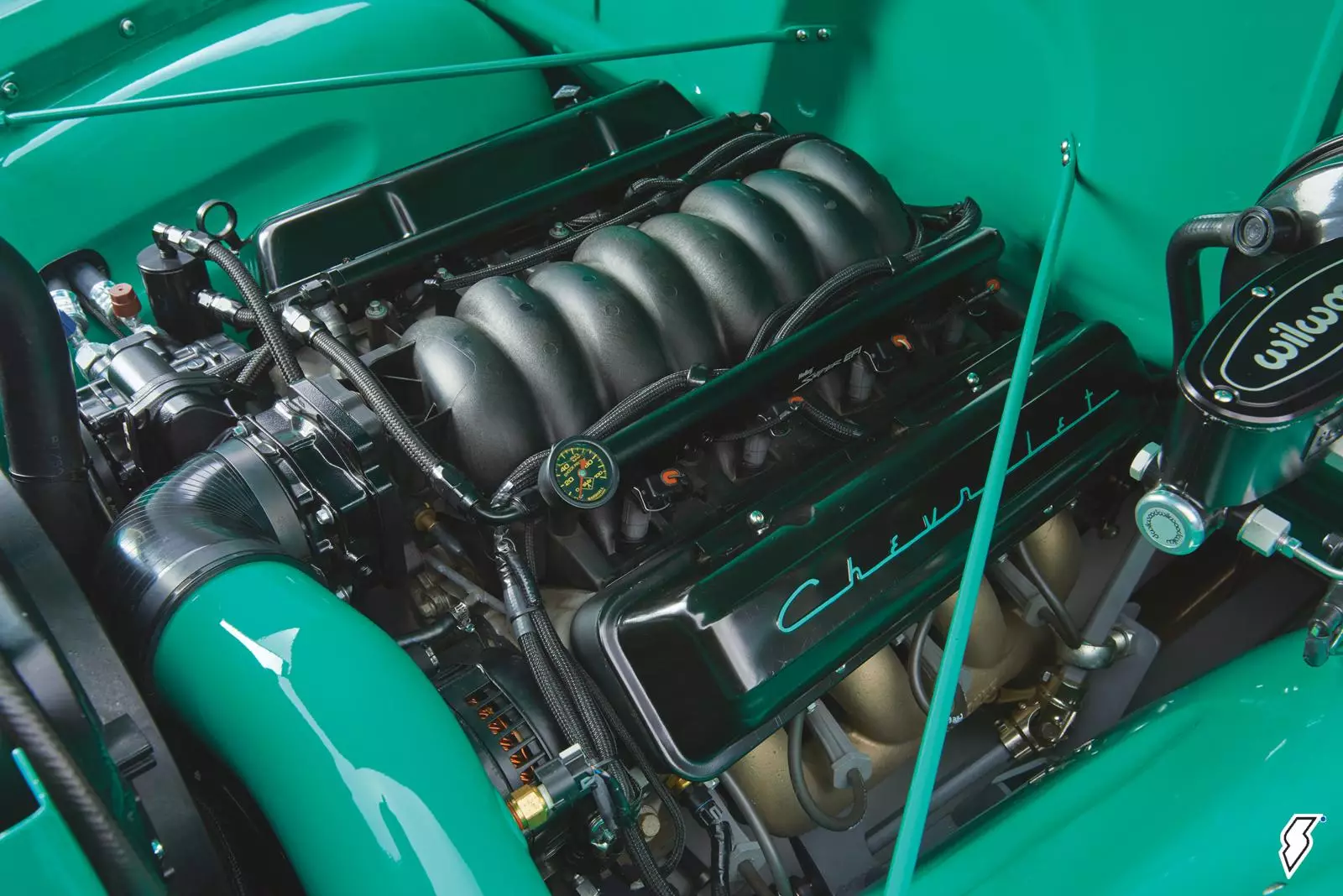


The LS1 and LS6 engines are two of the most iconic and revered V8 powerplants ever produced by General Motors. While sharing a common architecture and displacement, these engines possess distinct characteristics that cater to different performance requirements. This article delves into the nuances that separate the LS1 from the LS6, uncovering the secrets behind their design, capabilities, and real-world applications.

The LS1 engine made its debut in 1997, powering the fifth-generation Chevrolet Corvette (C5). This all-aluminum, overhead valve V8 represented a significant leap forward in GM's small-block engine design, boasting advanced features and impressive performance. Three years later, in 2001, the LS6 emerged as a higher-performance variant, initially introduced in the Corvette Z06 and later finding its way into the formidable Cadillac CTS-V.
Both engines share the same fundamental architecture, featuring a 5.7-liter (346 cubic inch) displacement achieved through a 99.0 mm (3.9 inch) bore and 92.0 mm (3.62 inch) stroke. This common foundation allowed GM to leverage existing manufacturing processes while tailoring each engine's specific components to meet varying performance targets.
While the LS1 and LS6 share a similar displacement, their differences lie in critical areas such as compression ratios, cylinder head designs, camshaft profiles, and intake manifold configurations. These variations contribute to the distinct performance characteristics that set the two engines apart, making the LS6 a high-revving, high-output powerhouse, and the LS1 a reliable and capable workhorse.
To truly appreciate the nuances between the LS1 and LS6 engines, it's essential to delve into their technical specifications and design elements. This section provides a comprehensive comparison of the key components that define their performance capabilities.
| Specification | LS1 | LS6 |
|---|---|---|
| Compression Ratio | 10.1:1 | 10.5:1 |
| Cylinder Head Design | Standard | Unique "243" Heads with smaller combustion chambers, revised port designs, sodium-filled exhaust valves, and higher valve spring pressures |
| Camshaft Lift | 0.500 inch | 0.525 inch |
| Camshaft Duration | 198/208 degrees | 204/211 degrees |
| Intake Manifold Design | "V-shaped" bottom (later replaced with flat-bottom) | Flat bottom optimized for higher airflow |
| Piston Design | Standard | Stronger alloy |
| Oiling System | Standard | Revised for high lateral acceleration |
| Cylinder Block Design | Standard | Cast-in windows for improved breathing |
The compression ratio plays a crucial role in an engine's power output and efficiency. The LS1 features a compression ratio of 10.1:1, which strikes a balance between performance and reliability. In contrast, the LS6 boasts a higher compression ratio of 10.5:1, allowing for increased thermal efficiency and extracting more power from the same displacement.
While both engines employ overhead valve cylinder heads, the LS6 features unique "243" cylinder heads with smaller combustion chambers, revised port designs, sodium-filled exhaust valves, and higher valve spring pressures. These enhancements enable the LS6 to flow more air and achieve higher RPMs, contributing to its increased power output.
The camshaft plays a vital role in controlling the opening and closing of the valves, directly impacting an engine's breathing and power delivery. The LS1 features a camshaft with 0.500 inch lift and 198/208 degrees of duration, while the LS6 incorporates a more aggressive camshaft with 0.525 inch lift and 204/211 degrees of duration. This aggressive camshaft profile allows the LS6 to rev higher and generate more power at higher RPMs.
The intake manifold design significantly influences an engine's ability to ingest air and distribute it evenly to the cylinders. The LS1 initially featured a unique "V-shaped" intake manifold design, which was later replaced by a flat-bottom intake shared with the LS6. However, the LS6's intake manifold was optimized for higher airflow, further enhancing its performance potential.
In addition to the aforementioned differences, the LS6 incorporates several other enhancements to support its high-performance capabilities:
Stronger pistons cast from a more durable alloy
Revised oiling system better suited for high lateral acceleration
Windows cast into the cylinder block for improved bay-to-bay breathing at high RPMs
These enhancements contribute to the LS6's ability to withstand the increased stresses associated with its higher power output and revving capabilities.
The technical variations between the LS1 and LS6 engines translate into tangible performance differences, making each engine better suited for specific applications.

| Engine | Horsepower | Torque |
|---|---|---|
| LS1 | 350 hp @ 5,600 RPM | 375 lb-ft @ 4,400 RPM (manual) or 360 lb-ft @ 4,000 RPM (automatic) |
| LS6 | 385 hp @ 6,000 RPM | 385 lb-ft @ 4,800 RPM |
The LS6's higher compression ratio, more aggressive camshaft, optimized cylinder heads, and improved airflow contribute to its substantial power advantage over the LS1. The LS6 produces 385 horsepower at 6,000 RPM and 385 lb-ft of torque at 4,800 RPM, compared to the LS1's 350 horsepower at 5,600 RPM and 375 lb-ft of torque at 4,400 RPM (manual transmission) or 360 lb-ft at 4,000 RPM (automatic transmission).
The LS6's higher power output directly translates to superior acceleration and top speed capabilities. While the LS1 provided exhilarating performance in its own right, the LS6 offered an even more intense driving experience, particularly in high-performance applications where every fraction of a second counts.
One of the LS6's standout attributes is its ability to maintain power at higher RPMs. Thanks to its more aggressive camshaft profile, optimized cylinder heads, and improved airflow, the LS6 excels in high-revving scenarios, making it a favorite choice for enthusiasts seeking maximum performance on the track or drag strip.
The LS1 engine found its home in a wide range of applications, from the Chevrolet Corvette to various GM trucks and performance vehicles. Its balance of power, reliability, and affordability made it a popular choice for enthusiasts and daily drivers alike.
On the other hand, the LS6 was primarily reserved for high-performance models like the Corvette Z06 and Cadillac CTS-V, where its increased output and capabilities could be fully exploited. These vehicles were designed to take advantage of the LS6's high-revving nature and superior power delivery, providing an exhilarating driving experience for those seeking maximum performance.
While the LS1 and LS6 engines share many visual similarities, there are a few key identifiers that can help distinguish them from one another.
Intake Manifold Design: The LS1 intake manifold features a distinct "V-shaped" bottom, while the LS6 intake manifold has a flat bottom optimized for improved airflow.
Cylinder Head Casting Numbers: LS1 heads are typically cast with numbers like 339, 592, 806, 853, 805, 621, 174, or 241, while the LS6 heads are identified by the "243" casting number.
Another reliable way to identify an LS6 engine is by checking the Vehicle Identification Number (VIN). The eighth digit of the VIN will be a "G" for LS6 engines, while LS1 engines will have a different character in that position.
Both the LS1 and LS6 engines are highly modifiable, with a vast aftermarket support for performance upgrades, catering to enthusiasts seeking even more power and capabilities.
For the LS1 engine, popular modifications include:
Upgrading to LS6 cylinder heads, camshafts, and intake manifolds, effectively transforming the LS1 into a higher-performance variant.
Forced induction through the addition of superchargers or turbochargers, a common route for extracting even more power from the LS1.
While the LS6 already boasts impressive performance credentials, enthusiasts often seek to push the boundaries even further. Common modifications for the LS6 include:
Porting the cylinder heads
Installing more aggressive camshafts
Upgrading the intake and exhaust systems
Forced induction (superchargers or turbochargers) for maximum power output
| Engine | Cost | Availability |
|---|---|---|
| LS1 | More affordable | Readily available in used market and as crate engines from GM |
| LS6 | Generally more expensive | Limited availability, particularly for crate engines or low-mileage used units |
When it comes to cost and availability, the LS1 engine tends to be more affordable and readily available, both in the used market and as crate engines from GM. This makes the LS1 a popular choice for engine swaps and budget builds, where its combination of performance and affordability is highly valued.
On the other hand, the LS6, being a higher-performance variant, is generally more expensive, particularly when sourcing crate engines or low-mileage used units. However, for enthusiasts seeking maximum power and performance, the additional cost of the LS6 can often be justified by its capabilities.
Both the LS1 and LS6 engines are known for their overall reliability and longevity when properly maintained. However, there are a few potential issues to be aware of.
One common issue with the LS1 is the tendency for piston ring seal failures, which can lead to excessive oil consumption or compression loss over time. This issue is less prevalent in the LS6, thanks to its revised piston design.
The LS6's higher compression ratio and more aggressive camshaft can place greater stress on the valvetrain components, potentially leading to premature wear or failure if not properly maintained or upgraded with aftermarket components.
Regular maintenance, including oil changes, valve adjustments (if applicable), and addressing any issues promptly, can help ensure long-term reliability for both engines. Additionally, upgrading components for increased durability can mitigate potential issues and extend the lifespan of these iconic powerplants.
In the battle of LS1 vs LS6, it's clear that the LS6 holds the edge in terms of outright performance, thanks to its higher compression ratio, more aggressive camshaft, optimized cylinder heads, and improved intake manifold design. However, the LS1 is no slouch and remains a capable and reliable engine in its own right.
For street performance and daily driving, the LS1 can be an excellent choice, especially when paired with appropriate upgrades like LS6 heads, camshafts, and intake manifolds. Its lower cost and widespread availability also make it an attractive option for budget builds and engine swaps.
On the other hand, the LS6 is the clear choice for those seeking maximum performance, whether it's for high-performance street applications, drag racing, or road course duty. Its higher power output, improved breathing characteristics, and enhanced durability make it well-suited for these demanding environments.
Ultimately, the decision between the LS1 and LS6 will depend on your specific performance goals, budget, and intended application. Both engines are excellent examples of GM's engineering prowess and have earned their place as iconic powerplants in the automotive world.
The LS1 uses a standard oiling system, while the LS6 features a revised oiling system better suited for high lateral acceleration. This allows the LS6 to maintain proper oil pressure and lubrication during aggressive cornering and high-performance driving scenarios.
The LS1 uses standard pistons, whereas the LS6 incorporates stronger pistons cast from a more durable alloy. This enhances the LS6's ability to withstand the increased cylinder pressures and stresses associated with its higher power output.
The LS1 uses a standard cylinder block design, while the LS6 features cast-in windows in the cylinder block. These windows improve bay-to-bay breathing at high RPMs, contributing to the LS6's superior high-revving capabilities.
Yes, the LS6 cylinder heads feature sodium-filled exhaust valves, which are more durable and better able to withstand the higher temperatures and stresses generated by the LS6's increased power output.
The LS1's initial "V-shaped" intake manifold design was later replaced by a flat-bottom design shared with the LS6. However, the LS6's intake manifold was optimized for higher airflow, enhancing its breathing and power delivery.
The LS1 produces 350 horsepower at 5,600 RPM and 375 lb-ft of torque at 4,400 RPM (manual) or 360 lb-ft at 4,000 RPM (automatic). The LS6 generates 385 horsepower at 6,000 RPM and 385 lb-ft of torque at 4,800 RPM.
Yes, the intake manifold design and cylinder head casting numbers can provide visual clues. The LS1 has a "V-shaped" intake manifold bottom and cylinder head casting numbers like 339, 592, or 806, while the LS6 has a flat intake manifold bottom and "243" cylinder head casting numbers.
The LS1 is generally more affordable and readily available in the used market and as crate engines from GM. The LS6, being a higher-performance variant, is typically more expensive and has limited availability, particularly for low-mileage used units or crate engines.
The LS1 is prone to piston ring seal failures, which can lead to excessive oil consumption or compression loss over time. The LS6's higher compression ratio and more aggressive camshaft can place greater stress on the valvetrain components, potentially leading to premature wear or failure if not properly maintained or upgraded.
Yes, popular upgrades for the LS1 include installing LS6 cylinder heads, camshafts, and intake manifolds, effectively transforming the LS1 into a higher-performance variant. Forced induction through superchargers or turbochargers is another common route for extracting more power from the LS1.

Sarah isn't your average gearhead. With a double major in Mechanical Engineering and Automotive Technology, she dived straight into the world of car repair. After 15 years of turning wrenches at dealerships and independent shops, Sarah joined MICDOT to share her expertise and passion for making cars run like new. Her in-depth knowledge and knack for explaining complex issues in simple terms make her a valuable asset to our team.












